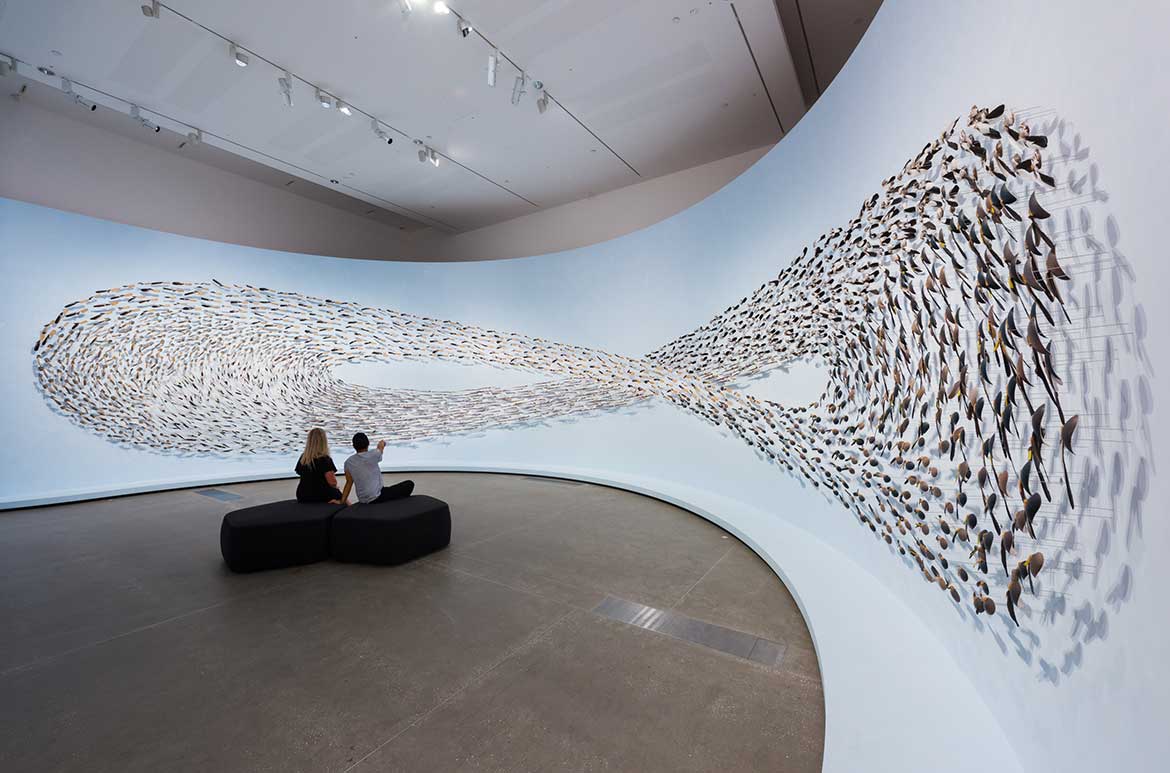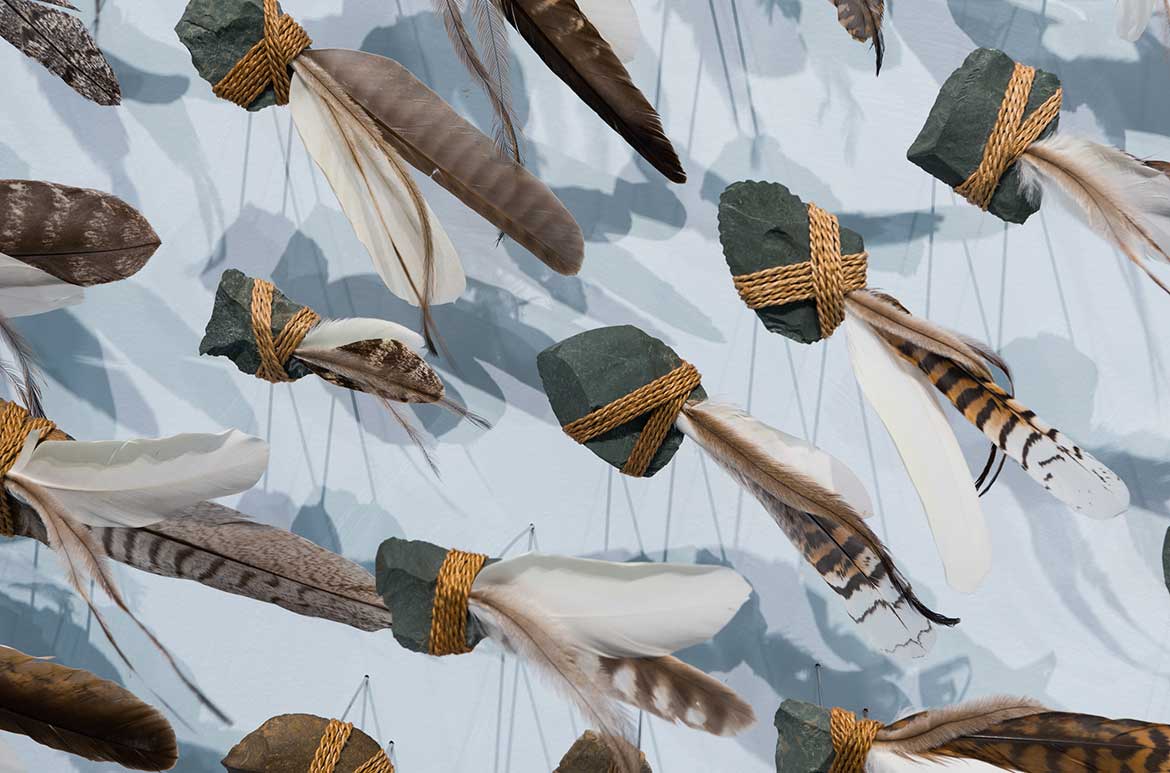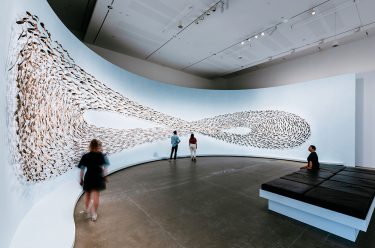Jonathan Jones’s untitled (giran) 2018 is reminiscent of a map of intersecting wind currents, evoking birds in flight; and knowledge, change and new ideas circling above our heads.
Understanding wind is an important part of understanding country.
Winds bring change, knowledge and new ideas to those prepared to listen. Jonathan Jones
Jones works across a range of media to create installations, interventions and public artworks exploring Aboriginal practices, relationships and ideas. These projects are grounded in research and collaboration with local communities and are often site-specific, representing, embodying or engaging with a site. Jones is from the Kamilaroi/Wiradjuri people in New South Wales and researches his culture through early writings and museum collections.
Made of almost 2000 sculptures and a soundscape, untitled (giran) brings the culture, language and philosophy of the Wiradjuri people of New South Wales to Kurilpa, a longstanding and important meeting place for Indigenous people, on the Maiwar (Brisbane) River. The sounds of wind, bird calls, breathing and Wiradjuri language animate the installation.
Jonathan Jones discusses ‘untitled (giran)’
This is the most recent in a series of collaborations that Jones has undertaken with elder Dr Uncle Stan Grant Snr, and draws on the Wiradjuri concept of giran. Giran describes the winds, change, as well as feelings of fear and apprehension. Traditional tools are at the heart of the artwork. Bound to each tool with handmade string is a small bundle of feathers – found treasures – carefully gathered and sent to Jones by people from across the country.
The circling murmuration of flying ‘birds’ is composed of six tool types. Like the winds, Wiradjuri philosophy divides them into male and female groups: bagaay – an emu eggshell spoon, bindu-gaany – a freshwater mussel scraper, waybarra – a weaving start, bingal – a bone awl, dhala-ny – a wooden spear point, and galigal – a stone knife. Each tool has limitless potential.
Jonathan Jones worked with family, Wiradjuri community members and long-time artistic collaborators to make the tools and to craft the feathers into tiny ‘wings’. The process of making – gathering and transforming the raw materials – brings people together, enhances connections to land, culture and language, and strengthens ties to generations who have passed on.
Jonathan Jones ‘untitled (giran)’

Acknowledgment of Country
The Queensland Art Gallery | Gallery of Modern Art (QAGOMA) acknowledges the traditional custodians of the land upon which the Gallery stands in Brisbane. We pay respect to Aboriginal and Torres Strait Islander elders past and present and, in the spirit of reconciliation, acknowledge the immense creative contribution Indigenous people make to the art and culture of this country.
It is customary in many Indigenous communities not to mention the name or reproduce photographs of the deceased. All such mentions and photographs are with permission, however, care and discretion should be exercised.
#QAGOMA


